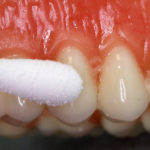
Accurate assessment of the health of the dental pulp is an important element of successful endodontic treatment. Diagnosis is commonly carried out using hot or cold thermal stimuli and electric pulp testing in recent years laser doppler and pulse oximetry have emerged as alternative and perhaps more accurate alternatives.
The aim of this systematic review was to investigate and compare the diagnostic accuracy of cold pulp testing (CPT), heat pulp testing (HPT), electric pulp testing (EPT), laser doppler flowmetry (LDF), and pulse oximetry (PO).
Methods
Searches were conducted in the PubMed, Scopus and Web of Science databases. Prospective or retrospective cohort study or cross-sectional studies of pulp diagnosis confirmed by histologic analysis, direct clinical observation (access cavity), or evidence of root canal filling (to confirm nonvital teeth) that provided enough data to calculate sensitivity, specificity, accuracy, positive predictive value (PPV), or negative predictive value (NPV) were considered. Quality of the included studies was assessed using the Quality Assessment of Diagnostic Accuracy Studies (QUADAS) tool
Results
- 28 studies were included.
- 14 studies had samples sizes smaller than 30 patients.
- 26 studies were considered to be of low quality, 1 of medium quality and 1 of high quality.
- For pooled sensitivity LDF and PO showed the highest values.
| Pooled Sensitivity
(95%CI) |
Pooled Specificity
(95%CI) |
|
| Cold pulp testing | 0.867 (0.810–0.909) | 0.843 (0.773–0.895) |
| Heat pulp testing | 0.778 (0.647–0.869) | 0.665 (0.485–0.807) |
| Electric pulp testing | 0.720 (0.647–0.783) | 0.928 (0.877–0.959) |
| Laser doppler flowmetry | 0.975 (0.926–0.992) | 0.950 (0.907–0.974) |
| Pulse oximetry | 0.973 (0.796–0.997) | 0.954 (0.909–0.978) |
Conclusions
The authors concluded: –
The most accurate pulp testing methods are LDF and PO, and the least accurate method is HPT. EPT has low sensitivity, suggesting that it is less likely to correctly identify nonvital teeth, but has high specificity, suggesting that it is more likely to correctly identify vital teeth. Among pulp sensibility tests, CPT has generally high diagnostic accuracy and can be considered a primary pulp testing method. Sensitivity, specificity, adjusted accuracy, adjusted PPV, and adjusted NPV were extracted or calculated from each study. Pooled estimates were calculated using a random effects model.
Comments
Three databases were searched for this review although it is not clear whether study selection data abstraction and quality assessment was carried out independently by the reviewers. The reviewers indicate that the used QUADAS to assess study quality although the table they present refers to this as modified QUADAS. A new QUADAS-2 tool is also now available and is the one recommended by the Cochrane Diagnostic Test Accuracy Reviews Handbook .
It is interesting to compare this review with the 2016 Alghaithy and Qualtrough review (Dental Elf – 20th Mar 2017). That review searched a different range of databases including just 9 studies, all of which are included in this new review and concluded that LDF showed promise particularly in areas where pulp tests are thought to be unreliable. This review also suggests that LDF and pulse oximetry are the most accurate. Further primary studies in this area should be reported using STARD and systematic reviews should use the approaches outlines in the Cochrane Diagnostic Test Accuracy Reviews Handbook.
Links
Primary Paper
Mainkar A, Kim SG. Diagnostic Accuracy of 5 Dental Pulp Tests: A Systematic Review and Meta-analysis. J Endod. 2018 May;44(5):694-702. doi: 10.1016/j.joen.2018.01.021. Epub 2018 Mar 20. Review. PubMed PMID: 29571914.
Other references
Dental Elf – 20th Mar 2017
Dental pulp testing: insufficient evidence to evaluate clinical performance
Picture Credits
By Coronation Dental Specialty Group – Own work, CC BY-SA 3.0
